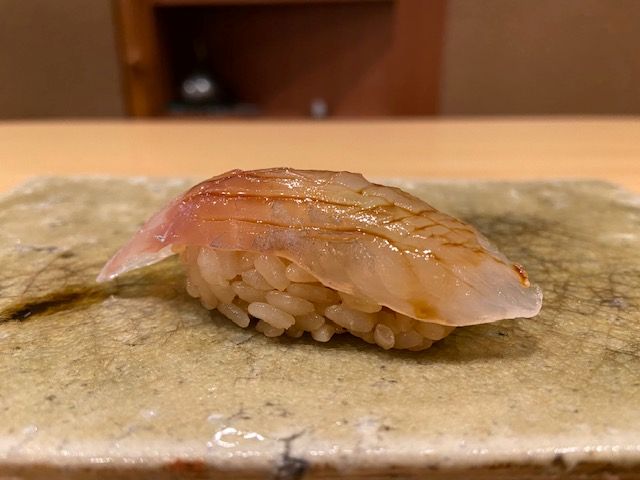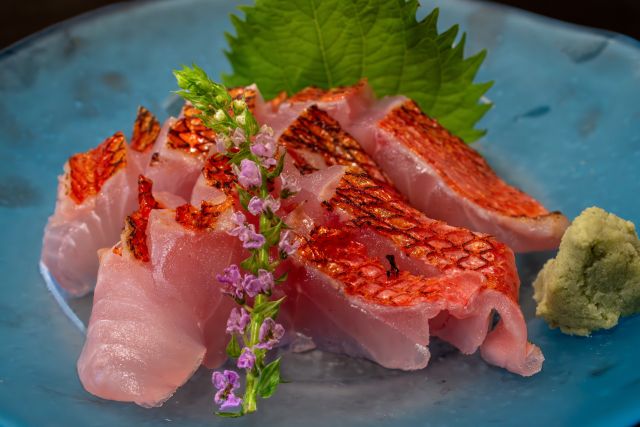
In Japanese cuisine, it is common for the same cooking method to have different names depending on the season or context, which often leads to confusion. A good example of this is the distinction between yushimo and yakishimo. While they are similar, they are not identical, and understanding the difference is important.
The word shimo (霜) literally means “frost.” In cooking, shimofuri refers to a preliminary treatment in which food is briefly exposed to heat—by pouring boiling water over it, dipping it in hot water, or lightly searing it—so that the surface turns white, resembling frost. It is suitable for fish with beautiful skin or fish that are delicious when eaten with the skin on.
It also refers to the preparation step, similar to kawasimo or yushimo, where the fish is briefly dipped in hot water to remove scales and bloodline before preparing Arani (粗煮) or kabutoyaki (兜煮).
Shimofuri technique removes odors, sliminess, and excess fat while sealing the ingredient’s umami. It also firms the flesh and adds elasticity.
Yushimo (湯霜) comes from yu (hot water) and shimo (frost). It is a type of shimofuri in which the surface of fish or meat is treated with boiling water, either by dipping it quickly into hot water or by pouring hot water over it. The food is then immediately cooled in ice water and the moisture is removed before further preparation. This method is also known as yubiki (湯引き).
When used for sashimi, it is called yushimozukuri (湯霜造り). In this preparation, hot water is poured over the skin side of a fish fillet to soften the skin, after which the fish is chilled, the moisture is removed, and it is sliced. The result is an elegant appearance, with curled skin that enhances both flavor and presentation.
The term yushimozukuri refers not only to the cooking technique itself but also to the sashimi dish prepared using that method.
Yakishimo (焼霜), on the other hand, comes from yaki (to grill) and shimo (frost). This method involves lightly searing the surface of fish or meat until it develops a touch of browning, then cooled in cold water. Like yushimo, it removes excess fat and odor, but it also imparts a subtle roasted aroma. When used for sashimi, it is called yakishimozukuri (焼霜造り). This preparation is widely applied to fish such as red seabream, chicken grunt, barracuda, largehead hairtail, blackthroat seaperch, daggertooth pike conger, yellowtail, Spanish mackerel, bonito, and mackerel.
Depending on the style, the fish may be seared while still in fillet form (saku), or after being cut into sashimi slices. Just like yushimozukuri, the term yakishimozukuri refers both to the cooking method itself and to the sashimi dish created through that method.
Additionally, kawashimozukuri (皮霜造り) refers to sashimi in which the skin has been blanched in boiling water or over an open flame. This technique is also called matsukawazukuri (松皮造り) because, when applied to fish such as sea bream, it creates a pattern that resembles pine bark (matsukawa means pine bark). It enhances the umami of the skin while eliminating any fishy odor. It has the same meaning as Shimofuri and Yushimo.
In short, both yushimo and yakishimo are forms of shimofuri. Yushimo uses boiling water, while yakishimo uses direct heat from searing. Though their purpose is similar, each creates a distinct flavor, texture, and visual appeal, showcasing the ingredient in a uniquely Japanese way.
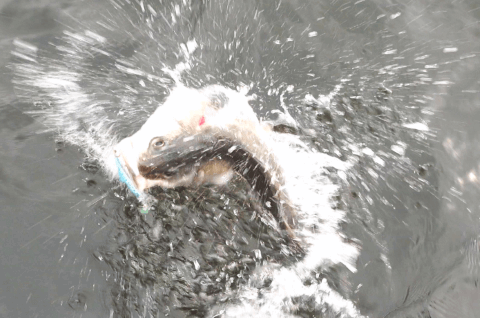

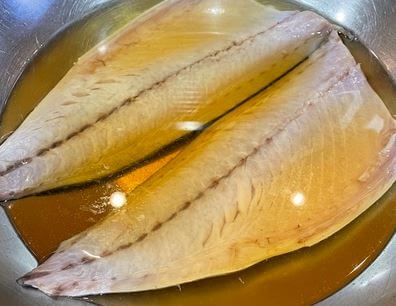
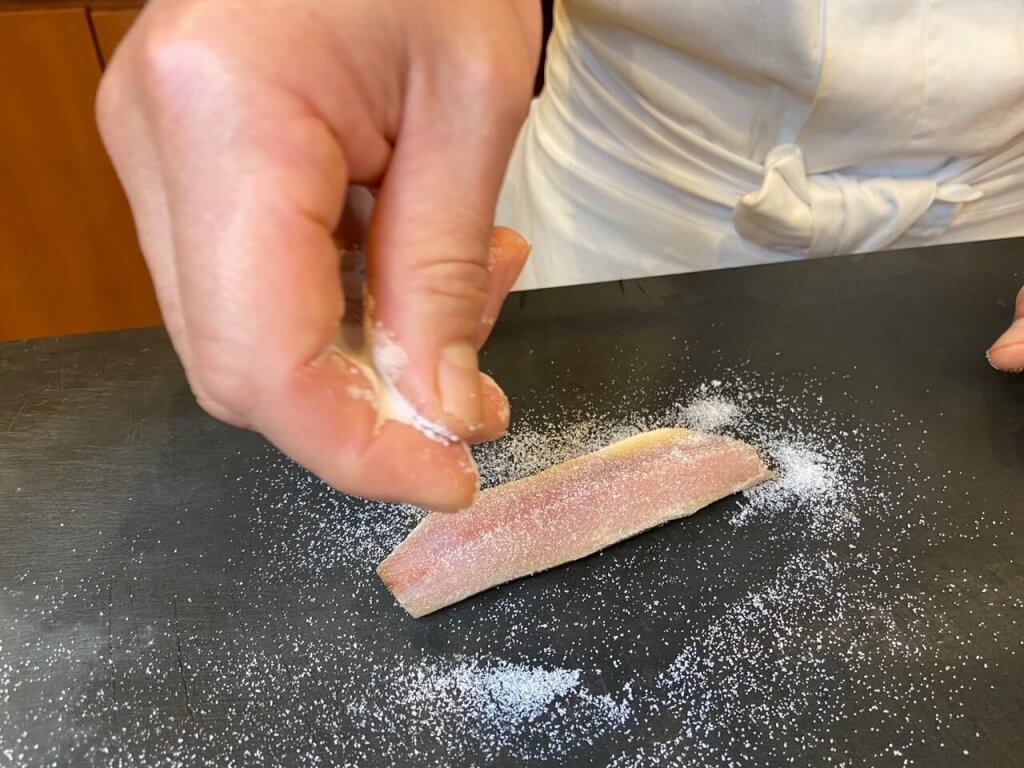
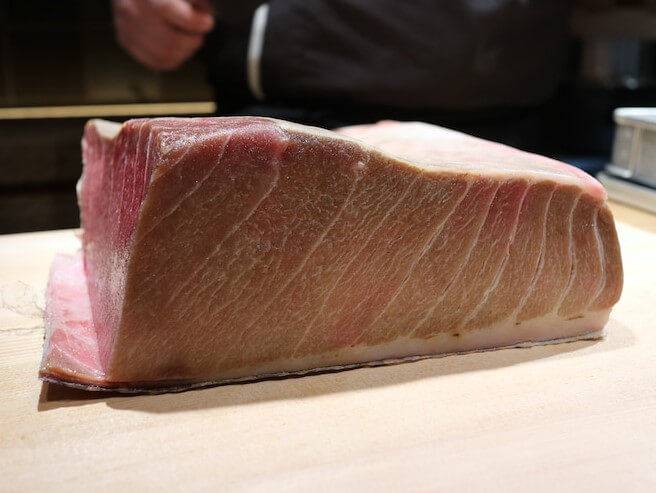
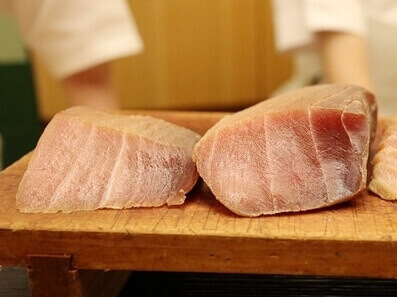 In order to mature seafood, after completing advance preparations (removing the head and internal organs then washing thoroughly; all blood must be removed), more than adequate considerations must be made for the fat content of the fish and management of the bodily fluids. Specifically, this includes processes like dry-aging at a low temperature, removing moisture using salt, utilizing enzymes and fermentation, wet aging by putting the item in a vacuum pack, and wrapping in aging sheets, which were developed thanks to
In order to mature seafood, after completing advance preparations (removing the head and internal organs then washing thoroughly; all blood must be removed), more than adequate considerations must be made for the fat content of the fish and management of the bodily fluids. Specifically, this includes processes like dry-aging at a low temperature, removing moisture using salt, utilizing enzymes and fermentation, wet aging by putting the item in a vacuum pack, and wrapping in aging sheets, which were developed thanks to 
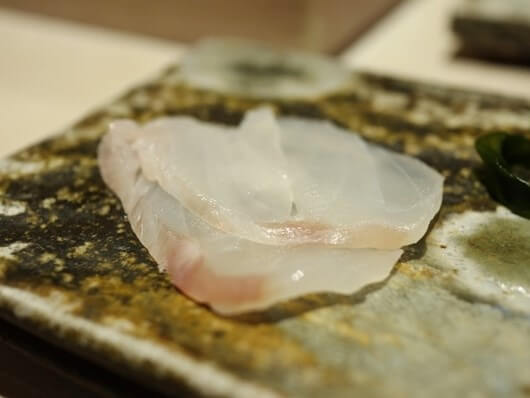
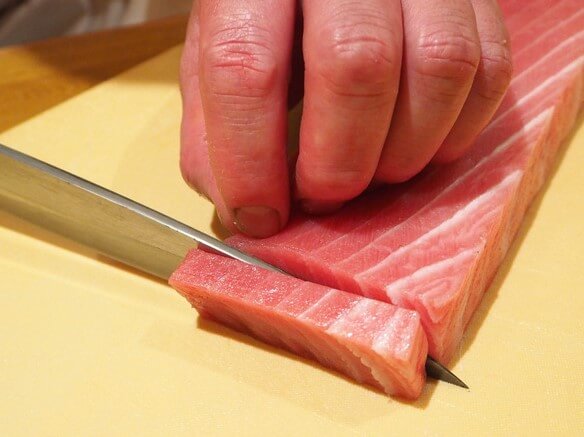
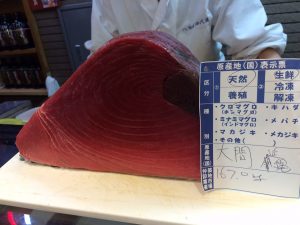 Then, when the sushi chef gets the tuna, he first separates the red, lean meat and the fatty toro portion, rewraps them separately, seals them in plastic, and puts them on ice. Next is waiting for the “young” meat, not yet suitable for eating, to mature. The number of days the fish will be rested depends on the size of the fish and the temperature. The smaller the cut and the warmer the temperature, the shorter the rest time. Generally the time is from 3-14 days.
Then, when the sushi chef gets the tuna, he first separates the red, lean meat and the fatty toro portion, rewraps them separately, seals them in plastic, and puts them on ice. Next is waiting for the “young” meat, not yet suitable for eating, to mature. The number of days the fish will be rested depends on the size of the fish and the temperature. The smaller the cut and the warmer the temperature, the shorter the rest time. Generally the time is from 3-14 days.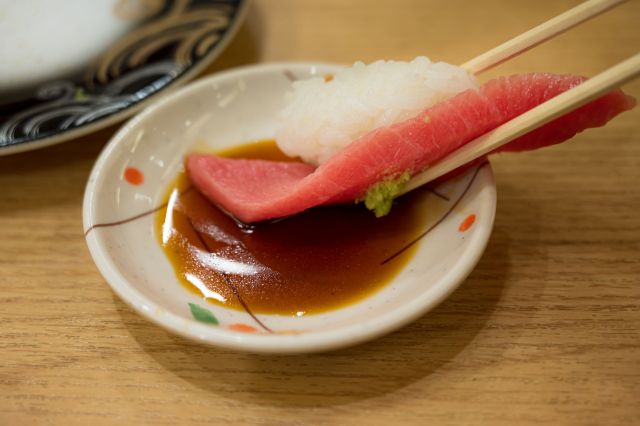
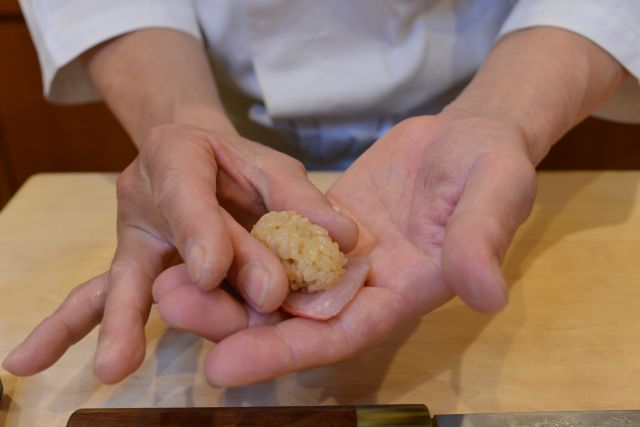
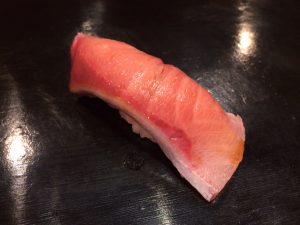
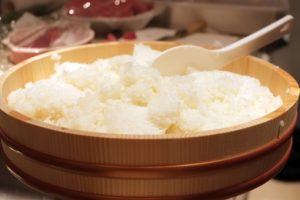 From the end of the Edo period through the Meiji period, rice was cooked using firewood and a pot. It is not easy to get the fire at the right temperature and the rice has to be cooked to the same texture regardless of where it came from or the size of the grains, so at the time the task required a skilled chef. Therefore, there were
From the end of the Edo period through the Meiji period, rice was cooked using firewood and a pot. It is not easy to get the fire at the right temperature and the rice has to be cooked to the same texture regardless of where it came from or the size of the grains, so at the time the task required a skilled chef. Therefore, there were 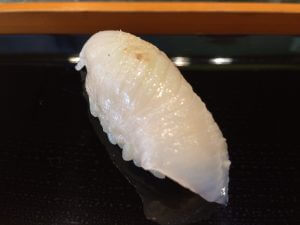 The balance between Shari (vinegar rice) and the topping is important in sushi. No matter how good the topping, the sushi won’t be good if the Shari isn’t right for it. More restaurants have been using red vinegar lately, but even if you use a Shari with a strong taste like red vinegar, the balance will be destroyed if the topping has a weaker flavor. Seasoning that goes well with various toppings that doesn’t stand out too much is ideal.
The balance between Shari (vinegar rice) and the topping is important in sushi. No matter how good the topping, the sushi won’t be good if the Shari isn’t right for it. More restaurants have been using red vinegar lately, but even if you use a Shari with a strong taste like red vinegar, the balance will be destroyed if the topping has a weaker flavor. Seasoning that goes well with various toppings that doesn’t stand out too much is ideal.